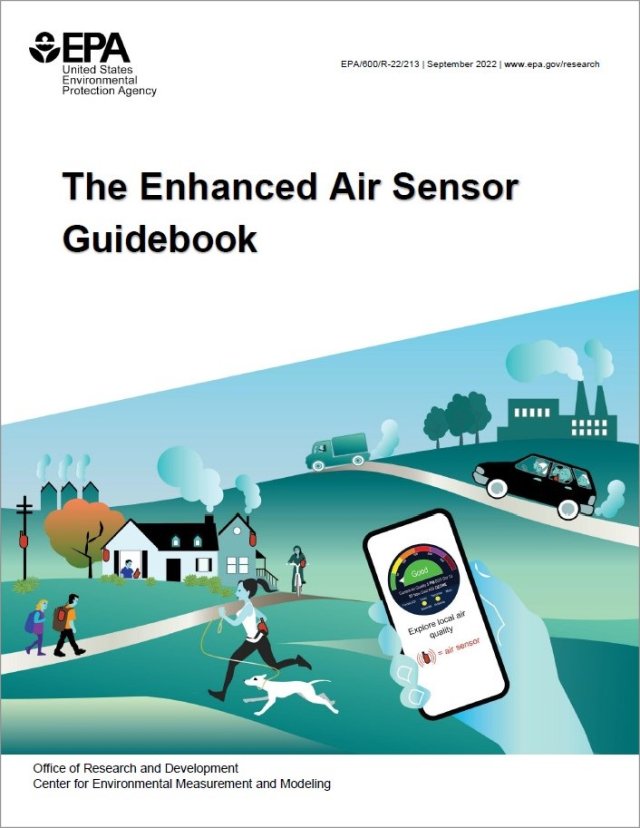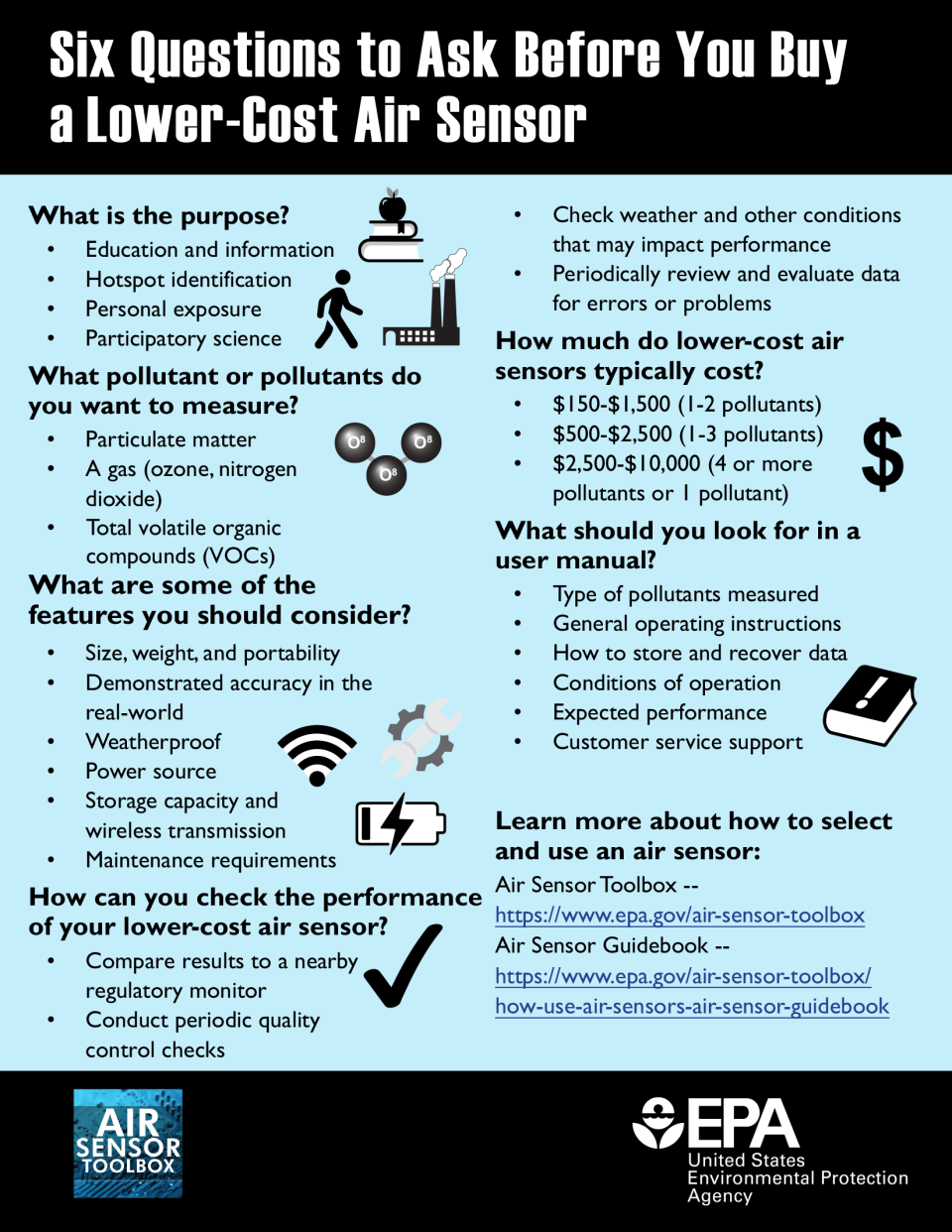How to Use Air Sensors: Air Sensor Guidebook
On this page:
Motivation
The United States Environmental Protection Agency (U.S. EPA) published the original Air Sensor Guidebook in 2014 to help those interested in using sensors to collect air quality measurements and interpret sensor data. Recognizing the ever-increasing availability of sensors, expanding scientific knowledge, and availability of best practices to support sensor use, the U.S. EPA significantly updated the 2014 Guidebook. The 2022 refreshed version, The Enhanced Air Sensor Guidebook, includes updated content and new topics that incorporate best practices, current knowledge, and recommendations on sensors.
Overview
The Enhanced Guidebook supports users in planning and collecting air quality measurements using air sensors. The Guidebook can help sensor users:
- Learn the basics of air quality, air pollution monitoring, and air sensors
- Plan and conduct an air quality monitoring study
- Select, setup, and use air sensors
- Analyze, interpret, communicate, and act on results
- Understand the basics of air sensor performance
The Enhanced Guidebook contains the following chapters:
- Chapter 1: Introduction to Air Sensors and the Guidebook – provides background information about air sensors, our purpose in providing this Enhanced Air Sensor Guidebook, key differences between the 2014 Guidebook and this enhanced version, and the intended audience of the guidebook
- Chapter 2: Air Quality 101 – provides basic knowledge of outdoor air quality, a summary of the health and environmental impacts of select air pollutants, an overview of the different types of air quality monitoring approaches, a review of air quality regulations and indices, and specific information about the Air Quality Index (AQI)
- Chapter 3: Monitoring Using Air Sensors - provides an overview of the steps involved in planning a monitoring study including Question, Plan, Setup, Collect, and Evaluate
- Chapter 4: Sensor Performance Guidance – provides an overview of sensor performance guidance, information about sensor performance evaluations, approaches used to evaluate sensor performance, and information about how to select sensors based on evaluation reports
The Enhanced Guidebook also contains expanded resources and content in the Appendices:
- Appendix A: General resources (e.g., air quality information, air sensor performance, data analysis tools)
- Appendix B: A list of ‘Questions to Consider when Planning, Collecting, and Sharing Your Data’ to prepare sensor users for questions to expect from others
- Appendix C: Checklists for quickly determining how to select sensors, items to look for in a user manual, and maintaining air sensors
- Appendix D: Information on Data handling and the Air Quality Index
- Appendix E: Education on Interpreting Sensor Performance Evaluation Results
- Appendix F: A glossary of terms used in the guidebook
The intended audience includes individuals, communities, schools, researchers, environmental agencies (e.g., air quality, environmental quality, natural resources, health), industry, medical professionals, emergency responders, technology developers, data integrators, and more.
Related Resources
Enhanced Air Sensor Guidebook (2022)
A resource to support users (e.g., individuals, communities, schools, researchers, environmental agencies, industry, medical professionals, emergency responders, technology developers, data integrators) in planning and collecting air quality measurements using air sensors.
Original Air Sensor Guidebook (2014)
This archived version of the 2014 Air Sensor Guidebook is provided as a resource for those who may have cited this original version. Please note the content may be outdated and may contain concepts that the research and experience no longer support.
This infographic (Figure 3.3 from the Enhanced Air Sensor Guidebook) provides a short reference guide of key considerations that can help individuals make informed purchasing decisions. Chapter 3 provides more guidance on planning and implementing a monitoring project.


